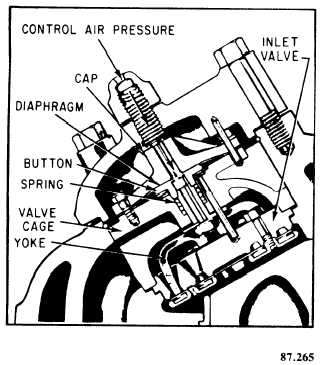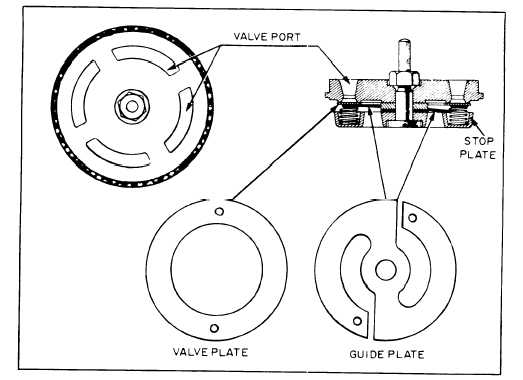Generally, control systems include unloading devices that function to remove all but the friction loads on compressors. Thus starting is unaffected by compression loads. Various types of unloading devices are discussed below.
The inlet-valve-type unloader holds the inlet valve open mechanically during both the suction and compression strokes, thereby preventing compression. Figure 11-20 illustrates a common inlet valve unloader. The unloader is positioned above the inlet valve. When air pressure rises to the preset unloading pressure, a pressure switch operates a solenoid unloader valve, which opens and allows receiver pressure to the inlet valve unloader. The pressure from the receiver, acting on the diaphragm of the inlet valve unloader, forces the yoke fingers against the inlet valve, holding it open. The intake air is pushed back out the inlet valve on the compression stroke so no compression takes place.
Figure 11-21 illustrates the thin plate, low-lift type of compressor valve. Most compressors use this type of valve.

Figure 11-20. - Inlet valve unloader.
The use of an unloader valve on each cylinder and a pressure switch with a solenoid unloader valve provides a step or sequenced capacity control. Figure 11-22 illustrates a flow diagram of a

Figure 11-21. - Thin plate, low-lift, compressor valve assembly.
Continue Reading